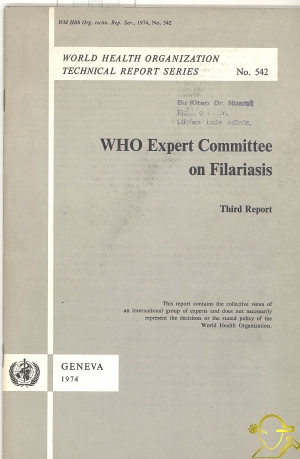Who Expert Committee on Filariasis
İÇİNDEKİLER1. Distribution and prevalence of lymphatic filariasis (Wuchereria and Brugiainfections) 1.1 Areas of decreasing prevalence 1.2 Areas of increased prevalence 2. Evaluation of control measures 2.1 Chemotherapy 2.2 Experimental chemotherapy 2.3 Control of vectors 2.4 Sanitation, urban environmental improvement, and health education 3. Methods for epidemiological assessment 3.1 Assessment of clinical manifestations in surveys 3.2 Parasitological and immunodiagnostic procedures in surveys 3.3 Parameters for an analysis of the dynamics of transmission 4. Other fllarial parasites 4.1 Problems of taxonomy 4.2 Loa loa 4.3 Dipetalonema perstans 4.4 Dipetalonema streptocerca 4.5 Mansonella ozzardi 5. Research proposals 5.1 Epidemiology 5.2 Chemotherapy 5.3 Pathophysiology 5.4 Tmmunology 5.5 Vector control 5.6 Vector ecology and bionomics 5.7 Miscellaneous research proposals 6. Recommendations Acknowledgements Annex 1. The distribution of fllarial infections of man and their vectors Annex 2. Protocols for filariasis surveys Annex 3. Methods for the diagnosis of microfilaraemia NOTLARThird Report/ This report contains the collective views of an international group of experts and does not necessarily represent the decision or the stated policy of the World Health Organization.   |



